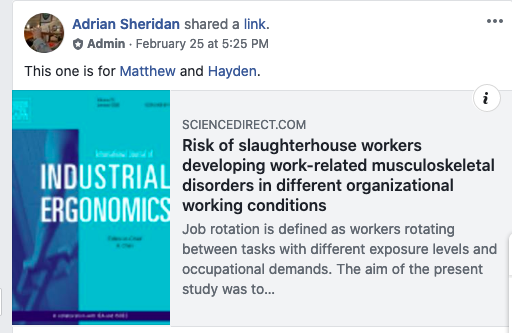Risk of slaughterhouse workers developing work-related musculoskeletal disorders in different organizational working conditions In slaughterhouses, there is the challenge of efficiently implementing job rotations due to the predominance of repetitive tasks that require intense movement of the upper limbs. In addition, some limitations are found when creating a job rotation plan, such as: hygienic sanitary aspects specific to each sector, differentiated remunerations among tasks and the insalubrious tasks existing in some sectors. In this way, it is recommended to carry out further studies in poultry slaughterhouses in order to examine the existence of non-repetitive tasks that could be part of the job rotation schemes, and thus, to reduce risk. Other recommendations are to investigate the efficiency of job rotations with more than two tasks, as well as include light or non-repetitive tasks.

#science #chiropractor #chiropractic #research #education #evidence based #patient centered #interprofessional #collaborative #rehabilitation #public health #spinal health #musculoskeletal health #ethics #pain #function #disability #QOL #knowledgetranslation


